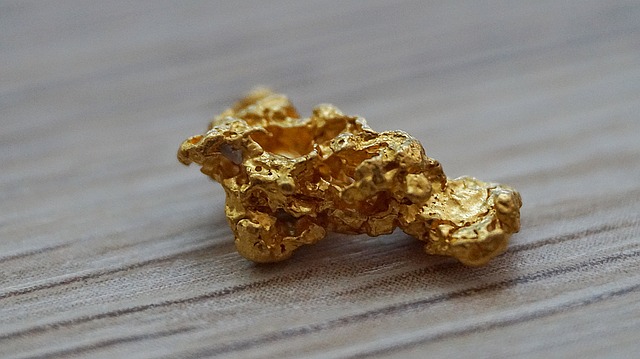401(k) plans can be rolled over into IRAs that invest in physical gold and silver as an alternative for those preferring tangible assets. This process, either through a direct rollover or a 60-day rollover, requires adherence to IRS guidelines and careful coordination with a specialized custodian and financial advisor. The IRS specifies the types of precious metals allowed, including gold, silver, platinum, and palladium in certain forms like bullion or coins. Investors must choose a reputable custodian for their self-directed IRA, ensuring compliance with regulations and providing secure storage for their investments. It's important to consider the purity, liquidity, and historical performance of various precious metal products before making a decision. The rollover process is initiated by opening a new IRA account and transferring funds from the old 401(k) while adhering to plan terms, avoiding tax penalties, and maintaining the tax-advantaged status of the retirement savings.
Exploring the transformation of your 401(k) into a tangible investment in gold and silver offers a strategic approach to diversifying your retirement portfolio. This article delineates the multifaceted process, beginning with verifying the eligibility of your plan for rollovers—a crucial step whether you’ve transitioned jobs or your current plan permits in-service withdrawals. By understanding the intricacies and adhering to the steps, including selecting a reputable IRA custodian that specializes in precious metals and carefully choosing your gold and silver holdings, you can navigate this unique financial maneuver with confidence. We’ll guide you through each stage of the rollover process, ensuring your assets are transferred effectively to a precious metals IRA.
- Understanding 401(k) to Physical Gold and Silver Rollovers
- Steps for Rollover Eligibility: Checking Plan Rules
- Selecting a Trusted IRA Custodian Specializing in Precious Metals
- Choosing the Right Gold and Silver Investments
- Completing the Rollover Process: Transferring Funds to Your New Precious Metals I
Understanding 401(k) to Physical Gold and Silver Rollovers

401(k) plans offer a tax-advantaged way for individuals to save for retirement, typically by investing in diversified portfolios of stocks, bonds, and mutual funds. However, for those with a preference for tangible assets as part of their retirement strategy, converting a 401(k) into physical gold and silver can be an appealing alternative. This process, known as a rollover, involves transferring funds from your 401(k) account to an Individual Retirement Account (IRA) that specializes in buying precious metals. Before initiating this transition, it’s crucial to ascertain the terms of your current 401(k) plan. Not all plans permit rollovers, and the rules can vary significantly between providers. If your plan does allow for such transfers—either as a direct rollover or through a 60-day rollover—you must proceed with caution to avoid penalties and taxes. A direct rollover is when the funds are moved directly from your 401(k) to the IRA by the custodians of both accounts, which simplifies the process and ensures compliance with IRS regulations. In contrast, a 60-day rollover involves you personally receiving the funds, which must then be deposited into the new IRA within two months to avoid tax implications.
Once you have established an IRA that allows for physical gold and silver investments and have ensured that your rollover adheres to IRS guidelines, you can begin selecting the precious metals you wish to include in your retirement portfolio. The Internal Revenue Service (IRS) stipulates specific eligibility criteria for the types of metals that can be held within a retirement account. These typically include gold, silver, platinum, and palladium in the form of bullion or coins that meet certain fineness requirements. Investors have the flexibility to choose between different types of metals and various forms, such as bars, coins, or rounds, ensuring diversification and alignment with their investment goals and risk tolerance. The process of converting your 401(k) to physical gold and silver is a strategic decision that can provide a tangible asset component to your retirement savings, potentially offering protection against inflation and market volatility. It’s important to work closely with both a reputable precious metals IRA custodian and a knowledgeable financial advisor to navigate this process effectively.
Steps for Rollover Eligibility: Checking Plan Rules

Before initiating a rollover of your 401(k) to physical gold and silver, it is imperative to review the terms and conditions of your plan. Not all 401(k) plans permit rollovers, and the rules can vary significantly from one plan to another. Typically, you have a few options for accessing your 401(k) funds: if you’ve terminated employment or left your job under conditions that allow for in-service withdrawals, you may be eligible to perform a rollover. This option enables you to transfer your funds into an Individual Retirement Account (IRA) that specializes in alternative assets like precious metals without triggering taxes or early withdrawal penalties. To determine if your plan supports this move, consult with your plan administrator or the plan document. These documents will outline the types of distributions permitted under your plan and any specific procedures for executing a rollover. It’s a critical step that requires careful attention to detail and adherence to IRS regulations to ensure a smooth transition of your funds into a precious metals IRA.
Selecting a Trusted IRA Custodian Specializing in Precious Metals

When contemplating the conversion of your 401(k) to physical gold and silver, one of the first steps is to identify a trusted individual retirement account (IRA) custodian who specializes in precious metals. This custodian will play a pivotal role in facilitating the transaction and ensuring that the investment adheres to IRS regulations. The chosen custodian should be reputable, experienced in precious metals, and equipped with the necessary infrastructure to handle such assets. They must also be approved by the IRS to hold these types of investments within an IRA. It is imperative to conduct thorough due diligence when selecting your custodian; their expertise and compliance track record are crucial for a seamless transition and ongoing management of your precious metals IRA.
Once you have identified a qualified custodian, they will guide you through the specific processes involved in rolling over your 401(k) funds into a self-directed IRA that permits investments in physical gold and silver. This includes providing you with detailed instructions on how to initiate the rollover, ensuring that you are compliant with withdrawal regulations and transfer rules. The custodian will also assist in sourcing eligible precious metals that meet the IRS’s purity standards for IRA investments. Their involvement is essential in navigating the complexities of this investment strategy and in securing your financial future with a tangible asset base.
Choosing the Right Gold and Silver Investments

When considering the conversion of a 401(k) to physical gold and silver, selecting the right investments is paramount. The precious metals market offers a variety of options, including coins, bars, and bullion, each with its own attributes. Investors should research the purity, storage requirements, liquidity, and historical performance of different products. For instance, coins like American Eagles or Canadian Maple Leafs are widely recognized and have established premiums over their gold content. On the other hand, bars and bullion typically offer lower premiums but may require secure storage arrangements. It’s also crucial to consider the reputability of the dealer from whom you purchase these metals, as their credibility can impact the authenticity and purity of your investment. Additionally, understand the different types of precious metal accounts, such as a Self-Directed IRA (SDIRA) that specifically holds alternative assets like gold and silver, ensuring compliance with IRS regulations. This due diligence will help ensure that your investment in physical gold and silver is both secure and aligned with your financial goals.
Completing the Rollover Process: Transferring Funds to Your New Precious Metals I

Once you’ve confirmed that your 401(k) plan permits rollovers, the process of converting your retirement savings into physical gold and silver can be initiated. The first step is to select a trustee-to-trustee transfer, where your new self-directed IRA—specifically designed to hold precious metals—will serve as the vehicle for this change. You’ll need to open such an account with a custodian that specializes in rare metals if you haven’t already done so. This custodian will guide you through the necessary paperwork and provide instructions on how to proceed with transferring funds from your 401(k) plan.
Upon setting up your new IRA account, request a distribution of your 401(k) funds directly to the precious metals IRA custodian. It’s crucial to ensure that the funds go straight from your former employer’s plan to the new IRA to maintain the tax-advantaged status of your investment. The custodian will then purchase eligible precious metals on your behalf, adhering to the Internal Revenue Service (IRS) standards for acceptable types and purities of gold, silver, platinum, and palladium. These metals are typically held in an assigned depository until you reach the age at which distributions can begin without penalty, ensuring your investment is both secure and compliant with IRS regulations.
In transitioning your 401(k) into physical gold and silver, due diligence is paramount. Ensuring your plan permits rollovers is the first step; understanding the rules paves the way for a seamless process. Partnering with a reputable IRA custodian adept in precious metals is crucial to navigating this unique investment terrain. Selecting your gold and silver holdings carefully, considering factors like purity and market value, ensures alignment with your financial objectives. Once these preparations are in place, the rollover itself—transferring funds to a precious metals IRA—is a straightforward procedure. By adhering to these steps, you can effectively convert your retirement savings into tangible assets that may offer protection against inflation and market volatility.
